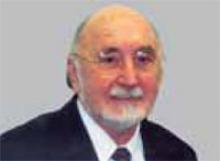Endogenous estrogen’s protective effect is based on the presence of estrogen—and androgen—receptors in bone (e.g., osteoblasts, osteoclasts) and in the coronary artery (e.g., endothelium, smooth muscle) and liver. As estrogen levels decline, bone remodeling accelerates and bone mineral is lost; the process of atherothrombosis also accelerates. Given the multifactorial nature of these conditions, estrogen therapy plays an important role in stabilizing bone loss and halting the progression of atheromatosis, both at menopause and at other times when a lack of estrogen is a relevant causative factor. When bone loss is due to hyperthyroidism or when cardiovascular disease is associated with dyslipidemia, hypertension or diabetes, disease-specific treatment is needed.
Individualizing HRT to condition and severity
As for HRT, the dosage and type need to be judged according to each clinical situation and degree of abnormality. For example, a lower dose of estrogen is required when a woman has osteopenia than when she has osteoporosis. Transdermal estrogen is the best option for a woman with elevated serum triglycerides or C-reactive protein (a cardiac inflammatory biomarker). Women with low levels of high-density–lipoprotein cholesterol will benefit from oral estrogen.
Measurement is central to this approach. Without a mammogram, breast density (a sign of local estrogen biosynthesis) cannot be documented or quantified. A bone-density test (with bone markers) is needed to assess bone health; a fasting lipid profile (including glucose) and possibly a C-reactive protein assay are the only means of assessing the patient’s cardiovascular disease risk status.
Prescribe lowest dose and monitor. Clinicians should prescribe the lowest estrogen dose and then monitor therapy. This entails measuring baseline serum estradiol and conducting meaningful posttreatment monitoring, best achieved with 17ß-estradiol-based products (oral or transdermal). A total serum estradiol value of 40 to 80 pg per milliliter has been found effective in controlling bone loss, coronary artery vasoreactivity, and cognition. The late initiation of hormone therapy is not recommended, since estrogen may disrupt the fibrin capsule of arterial intimal plaques and precipitate thrombosis with vascular luminal occlusion and myocardial infarction or stroke.
Not all hormones are the same
Not all estrogens or progestins are equal in their formulation, pharmacologic properties, or function. As noted previously, nonpregnant women synthesize only 2 bioavailable estrogens: estradiol and estrone. Pharmacologic preparations of 17ß-estradiol have properties similar to those of endogenous estrogen. Depending on the dose and route of administration, they can, to a certain degree, replicate a premenopausal or postmenopausal estrogen milieu. CEE, the preparation used in the WHI, contains 10 estrogens and 200 metabolites, with varying degrees of estrogenic and antiestrogenic activity. Thus, it is not possible to monitor posttreatment estradiol values.
It is significant that only the estrogenprogestin arm of the WHI was suspended. This suggests that MPA, the progestin in the combination therapy used in the trial, may be responsible for the unwanted results. There are a number of pharmacologic differences between MPA, natural progesterone, and the 19-nor-testosterone–derived progestins (e.g., norethindrone acetate [NETA]). In addition, the half-life of MPA (24 hours) greatly exceeds that of progesterone (12 hours) and NETA (6 to 8 hours), thus potentially downregulating estrogen receptors in vital blood vessels that may already be compromised.
Putting the WHI in perspective
The WHI was planned as a primary cardiovascular-disease–prevention trial. Of the women enrolled in the study, 45.3% were 60 to 69 years of age, and 21.3% were 70 to 79. Thus, given the pathogenesis of cardiovascular disease, most subjects had some degree of coronary artery disease at the start of the study. Yet only 37 hormone-group subjects versus 30 placebo-group subjects per 10,000 women annually experienced an adverse clinical cardiovascular event. Except for year 5, the ratio of such adverse events in the hormone group decreased over time, compared with women in the placebo group. The HRT:placebo ratios of these events for years 1 through 6 were 1.78, 1.15, 1.06, 0.99, 2.38, and 0.78, respectively. (The unexpected jump in the event ratio in year 5 was due to an unexplained paucity of events in the placebo group and not an increase in the group of subjects treated with hormone therapy.)
The WHI definition of “healthy postmenopausal woman” ignored the heterogeneity of the climacteric by assuming that all women were biologically equal and that age had not added its toll in organ damage. In a parallel observational arm of the WHI, C-reactive protein independently predicted vascular events among healthy postmenopausal women, but this was related to baseline levels of the inflammatory biomarkers and not to the hormone-therapy–related increase in C-reactive protein. The same is true for the stated increased risk of HRT-related breast cancer: 35 versus 30 events annually per 10,000 women on HRT and placebo, respectively. What differentiated the 35 who developed breast cancer from the 9,965 who did not?



